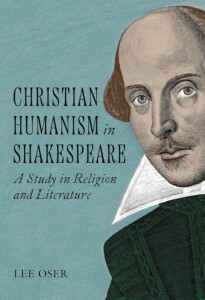
Christian Humanism in Shakespeare: A Study in Religion and Literature
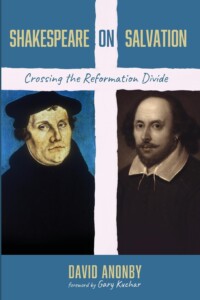
Shakespeare on Salvation: Crossing the Reformation Divide
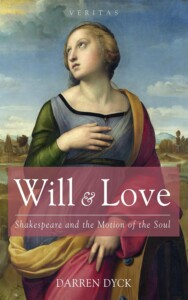
Will & Love: Shakespeare and the Motion of the Soul
It has been approximately twenty-five years since the “turn to religion” in Shakespeare studies. When I informally polled a few colleagues in history, psychology, and social work about a turn to religion in their fields of study, each identified a pivotal publication in the late 1990s or early 2000s in the scholarly literature. One is tempted to speculate on the coincidence of these “turns to religion” across academic disciplines. Was it the rise of sectarian fanaticism and religious extremism that prompted scholars to examine the role of religion in their areas of expertise? Was it the phenomenon of an intensifying culture war that put religion into focus as a legitimate causal variant? Was it the recognition of First Nations spirituality in indigenous studies? Was it the eschatological angst of Y2K? When Ken Jackson and Arthur F. Marotti reviewed the turn to religion in early modern studies, they concluded: “Clearly, the deconstructive response to Enlightenment rationality has opened up religious culture and religious study to new (but perhaps also old?) forms of apprehension and interpretation.”1 Ironically, then, the post-structuralist zeitgeist in the social sciences and humanities that relegated religion to a mere construct also is responsible for the readmission of religion in our disciplines.
This is not the time for triumphalism, however. Thanks to the influence of new historicism and cultural materialism in the 1980s and of critical theory in the 1990s, literary studies continue to approach religion in the Early Modern period as one expression of cultural discourse among many. Whereas the old historicism may have placed religion at the center of the cultural cosmos, religion after Foucault finds itself among a constellation of social institutions. The literary critical mood in the academy, as Rita Felski has described it in The Limits of Critique, remains suspicious of religion as an ideological state apparatus that underwrites oppressive practices regarding race, gender, and class.2 The “Shakespeare and Theory” series published by Bloomsbury under its influential The Arden Shakespeare imprint shows only a limited receptivity to religion in its promotion of contemporary critical theory and practice. Of the sixty-nine seminars and workshops at the 2025 gathering of The Shakespeare Association of America, only one session dealt directly with religion: “Shakespeare and Islam” explored representation, reception, and response in Muslim contexts. In post-graduate seminars, one is likely to encounter a Shakespeare who is in cahoots with the oppressive religious beliefs and practices of the period. At the same time, in high school English classes and undergraduate courses, Shakespeare is still read as embodying universal, humanist values but devoid of religious content, not unlike the secular humanist tenor of early twentieth-century criticism of Shakespeare. The fact that the three books being reviewed here are published by presses with religiously-inflected mandates and by authors affiliated with faith-based colleges suggests that the current (re)turn to religion in Shakespeare studies is not yet mainstream.
The past twenty-five years have seen various entry points into the territory of Shakespeare and religion. The long-standing contention about Shakespeare’s confessional allegiance has moved from focussing on biographical data to the texts themselves. Despite centuries of archival and archeological research into the life of William Shakespeare (1564–1616), the question of whether he was a recusant Roman Catholic or a practising Protestant cannot be definitively answered. Holy Trinity Church in Stratford-upon-Avon seems to have retained pre-Reformation vestiges of Catholicism after the accession of Elizabeth I in 1558, but how this fact relates to Shakespeare is unclear. Shakespeare’s daughter may have embraced the Old Faith as an adult, but this, at best, is circumstantial evidence of Shakespeare’s views. Even if the church records seem to indicate only a lukewarm affiliation with the Church of England, this material, too, is overly slender to bear the weight of a persuasive argument about Shakespeare’s faith. Thankfully, the three books reviewed here all eschew the biographical approach, focussing instead on what the plays reveal about the perduring vitality of Christian faith in these texts.
These books take religion to be the legitimate force in culture, rather than one cultural phenomenon among many. Whereas materialist criticism views religion as a construction on an economic base, or a symptom of the will to power, or a therapeutic practice, this re-turn to religion understands faith to be the oxygen that animates life itself, the grammar that gives meaning to reality, the architectonic that shapes the human world, the social imaginary that knits the body politic, the sine qua non of culture. Cultural artifacts from the Early Modern theater are saturated phenomena, to borrow Jean-Luc Marion’s phrase, whose religious content exceeds their form. As we will see later in this essay, religion is not reducible to matters of historical context, biographical data, Scriptural allusion, theological diction, biblical typology, and Christian allegory: religion is the generative DNA of the words on the page and the action on the stage. What makes Shakespeare particularly productive for exploring religion in the Early Modern period is his uneasy location in the ambivalent space between the enchanted medieval age and the disenchanted modern world, in terms of Charles Taylor’s framework in The Secular Age (2007).3 As such, the three books considered in this essay offer an opportunity to assess in more detail how religion works as a hermeneutic for reading Shakespeare’s plays. They complement each other well: Lee Oser demonstrates the extent to which the spirit of Erasmian humanism permeates Shakespeare’s Christian vision; David Anonby reads the role of soteriology in Shakespeare against theological positions of the period; and Darren Dyck traces Shakespeare’s conception of personhood back to its Augustinian roots. Each of these makes a significant contribution to the appreciation of the theological dynamics at work in Shakespeare, and each meaningfully advances the project of redressing the relative neglect of religion in Shakespeare studies.
Beginning with Christian Humanism in Shakespeare: A Study in Religion and Literature, Lee Oser situates his thesis for Shakespeare’s “immeasurable range, variety, and depth of Christian thought and feeling” (250) within “current understanding” (xiii) of religion and literature. In short, the current understanding is the tendency “to modernize, to secularize, to contain the religious and theological meanings of Shakespeare” (30). In his admittedly lengthy introduction, Oser responds to the suggestion that the plays do not reveal a “personal substratum” of faith (3) by engaging an impressive array of scholars, both those who read Shakespeare as primarily a secular author and those who read him as a Christian author. This extensive literature review is valuable for anyone wanting to become familiar with the question of religion and Shakespeare, and it is engaging as an example of civil disagreement in an academic context. For instance, while Oser dismisses the reductive nature of aggressive Christian allegorizing of Shakespeare, he notes that secular critics can be equally guilty of “writing teleological allegories” (8). Oser is certainly on point when he challenges the secularists for not dealing adequately with the nature of evil in the tragedies, and he illustrates the paucity of the secular approach in a nimble discussion of judgment in Romeo and Juliet: the passion and suffering that Shakespeare’s protagonists endure reflect Christian, rather than classical, mimesis, an observation that is further developed in the chapters on Hamlet and King Lear. Even as it makes the general case for religion in Early Modern literary studies, the introduction makes the specific case for reading the period as expressive of the Christian humanism of Erasmus.
The proof, of course, lies in the testing of the thesis against the evidence in the plays. Oser begins with what continues to be one of Shakespeare’s most popular comedies, A Midsummer Night’s Dream. Oser sets out to demonstrate how two themes in the play deploy the Christian humanist rhetorical strategy of paradox. First, Oser shows that Helena paradoxically achieves wisdom through folly in her journey of self-discovery through the forest near Athens. Oser here aligns Shakespeare’s insight with that of Erasmus in The Praise of Folly (1511, 1514) specifically and in Christian humanism generally: “fools and folly invite us to be skeptical about unexamined claims to knowledge and authority” (57). Limited skepticism is also the result of grappling with the second paradox in the play, between free will and predestination. Oser will return to the Reformation-era debate about the bondage or freedom of the will in his chapter on Hamlet, but Shakespeare already in A Midsummer Night’s Dream allows the audience to see the apparent contradiction of freedom and determination to find resolution in Helena’s choices and in Oberon’s foreknowledge. Both paradoxes can be summed up in Oser’s view that the comedy performs “Shakespeare’s idea of human freedom within religious bounds, . . . a playful expression of the poet’s urbane Christian skepticism” (80).
Christian skepticism is the crucial piece in Oser’s argument regarding Shakespeare’s humanism. In chapter 2, Oser argues that the morally ambiguous effect of The Merchant of Venice on the audience is produced by means of rhetorical figures deeply indebted to Renaissance humanism. Oser contends that the Christian character of Renaissance humanism radically challenges the epistemological assurance of classical philosophy: “Shakespearean rhetoric in its moral design is less a means of persuasion than a Christian game of moral interrogation” (85). The moral figures that Shakespeare deploys in A Merchant of Venice include inter se pugnantia (theory versus practice), secundum quid (false assumption), and, most materially, contrarium and contradictio (conflicting interpretation). All of these, Oser demonstrates, amount to a conviction of the via diversa of truth, arriving by indirect means at the realization that moral absolutes are elusive. “Because Shakespeare’s skepticism is not anti-foundational, The Merchant of Venice is not a debunking of Christian moral truth, per se, but an insistence upon its humbling complexity” (88). Shakespeare occupies the radical middle between the confident doctrines of Catholic and Reformed theology on the one hand and morally bankrupt protagonists in Christopher Marlowe on the other.
Oser then turns to the four English history plays that Shakespeare wrote between 1595–1599, known as the Henriad. In the writing of history, one may be tempted to assert eternal providence and justify the ways of God to the Englishman. As he works his way carefully through the four plays that comprise the Henriad, Oser consistently demonstrates that Shakespeare resists this temptation by revealing the limits of human knowledge in serious, Christian terms. The history plays achieve this by maintaining “a skeptical distance from major inferences of cause and effect” (127). In The Tragedy of Richard the Second, Shakespeare erodes the audience’s trust in the historical record and sows doubts about the vows and oath-keeping through irony. Thanks to the prophetic role of John of Gaunt, this play does appeal to “Christian ulteriority” (134, 169), by which British history is mapped onto the broad contours of biblical history. In both parts of Henry the Fourth, Oser unpacks what he calls Shakespeare’s “Christian mimesis” (148): the theater is the location where Shakespeare points his religious sensibility critically toward political instrumentalism, Puritan zealotry, and Tudor myth-making by suggestion, allusion, and jesting. At the same time, the conversion of Prince Hal into King Henry the Fifth, Oser suggests, is not a cynical Machiavellian move but is a redemptive chapter in the arc of England’s history. The Henriad ends with “oaths well kept and prosperous” (Henry V, 5.2.373) by which the sanctity of vows, which was seriously compromised in The Tragedy of Richard the Second, is restored.
The final two chapters (“Free Will in Hamlet?” and “On Not Understanding King Lear’s Hidden God”) are more focused than the previous chapters in advancing the same argument about Shakespeare’s Christian humanism. Hamlet is conflicted, not for psychological or philosophical reasons, but because he embodies the Reformation controversy of the will between Luther and Erasmus. In the final act of the play, Hamlet both expresses trust in providence (à la Luther) and accepts his freedom of choice (à la Erasmus). Between alternative accounts of agency and non-agency, Shakespeare remains ambiguous. The audience is left in uncertainty, made aware again of the limits of their knowing and the absence of moral absolutism. Such indeterminacy is a function, not of radical skepticism, but of Christian humanism. With King Lear, Oser avoids simplistic interpretation of the play’s ending (and the question of redemption) by maintaining that Shakespeare emphasizes the play’s process, namely, the necessity of tragic suffering. One of the challenges of a Christian reading of King Lear is the fact that the action is set in pre-Christian, pagan Britain. Therefore, when France invokes Christian concepts, Shakespeare is setting up a test for his audience regarding two moral frameworks, pagan and Christian. The metaphorical function of blindness in the play is an allusion to Sophocles and the blind seer, Teiresias, as well as is the nature of suffering experienced by Gloucester and Lear. For Oser, the religious sensibility of The Tragedy of King Lear is unlocked not by an allegorical key but by its recognition of suffering as a means of grace, something that Melanchthon and Erasmus would have appreciated (248). Aristotelian mimesis is modified by Christian mimesis.
David Anonby also begins Shakespeare on Salvation: Crossing the Reformation Divide with a reasoned defense for his engagement with religion in Shakespeare, invoking some of the same scholars that Oser does in his introduction. Anonby describes those in the turn to religion who have challenged the “secularizing narrative of the [Renaissance commercial] theater” (4), before turning to scholars who have more pointedly addressed soteriology in Shakespeare, Anonby’s specific project. Anonby summarizes the matter succinctly:
This volume hopes to contribute to the recovery of a greater understanding of the relationship between early modern religion and Shakespearean drama, a relationship which twentieth century criticism tended to dismiss as tenuous or to politicize as oppositional, but which the turn to religion in early modern scholarship of the past decade and a half has increasingly recognized as highly complex, sophisticated, and interdependent. (27)
In particular, Anonby will argue in his close reading of four plays that Shakespeare’s representation of soteriology engages the theological controversies among and between Catholics and Protestants in Elizabethan and Jacobean England. He refers to the project as “recovering the soteriological deep structures” in the plays (27).
In the first chapter, on The Merchant of Venice, Anonby suggests that the treatment of Shylock the Jew by his Christian adversaries dramatizes the otherness that Roman Catholics experienced in Elizabethan England. The superficial approach to Shylock in Venice interprets the Jew as law and the Christian as grace, whereas Anonby posits “a more nuanced dialectic between salvation by works . . . and salvation by faith and grace” (38). Anonby begins with a subtle critique of Portia’s famous courtroom performance, in the central and climactic scene of the play, an apt setting for unpacking the Lutheran notion of forensic justification. Not only is Portia’s invocation of mercy undermined by vindicative and self-justifying Venetians, but the play also proceeds to coerce Shylock to convert to Christianity, a practice viewed with some suspicion and associated in the minds of Shakespeare’s audience with requiring Catholics in England to swear the Oath of Supremacy. In the book’s conclusion, Anonby summarizes this part of his argument regarding The Merchant of Venice as “Shakespeare’s ethical critique of the cardinal doctrine of the Reformation, justification by faith alone” (256–7). The latter half of the chapter consists of sections on St. Paul and Luther’s anti-Judaism; faith and works (salvation and ethics); Richard Hooker’s moderate position between Protestant and Catholic soteriology; and the drift from spiritual to carnal love in the play’s resolution. Worthwhile in themselves as illustrative of the turn to religion, these sections relate somewhat loosely to the primary argument of the chapter.
Anonby devotes two chapters to Hamlet to demonstrate how the doctrine of salvation is central to our understanding of the play. Chapter 2 makes the case that Claudius’s prayer in Act 3 reflects the theology that Lancelot Andrewes develops in his twenty sermons on Cain (1599), specifically the free-will position that will later be associated with the name of Arminius and will become the predominant theology of salvation in the Church of England. Anonby leans into the theological differences between the two versions of Hamlet, with the Q1 version of Claudius’s prayer reflecting a Calvinist and Q2 an Arminian articulation of salvation. Whereas Oser argues that the play emphasizes providence over personal agency, Anonby concludes that “free will strikes a louder chord than predestination” (83). Chapter 3 turns to another locus of critical debate regarding Hamlet: the nature and role of the ghost. Anonby makes a plausible case for giving the ghost a religious and spiritual significance, particularly in reading the scene in the tradition of discretio spirituum. In short, Hamlet fails the test of properly discerning the spirit by choosing violent vengeance as his course of action. The argument that the crowing of the rooster at the departure of the ghost and Claudius’s use of the word “sift” are allusions to the testing of Peter is less convincing, particularly since Shakespeare’s preferred English translation of the New Testament, the Geneva Bible, uses the word “winnow” not “sift” in Luke 22:31. Taken together, these chapters offer a credible reading of Hamlet with a historically-contextualized theological hermeneutic.
The theological reading of Measure for Measure in chapter 4 demonstrates the incompatibility of the multiple manifestations of substitution and the ethical standard which the play purports to uphold. The “measure for measure” of the title directly invokes the words of Christ (Matthew 7:2) and invites a biblical ethical framework for our reading of the play. Vicarious atonement, of course, is crucial to both Catholic and Protestant soteriology, and the play certainly casts the moral dilemma of Isabella and Mariana in terms of substitutionary sacrifice, but the situation is more a parody than an allegory of Christian atonement. As Anonby puts it, “substitution works in Christian atonement but fails ethically when imposed on sexual praxis (and law)” (203). Anselm and Calvin provide the background to the theology of forensic justification that clearly validates Anonby’s dissatisfaction with the pardon that is granted to Angelo in the final scene: “Angelo’s egregious immorality seems to dissolve inexplicably in a mist of mercy” (175). Ultimately, the expedient confession and convenient forgiveness of the duke’s deputy reveals the moral failure at the heart of the play and indicates Shakespeare’s discomfort with eliding sacred and secular categories of church and state.
The final chapter, on King Lear, follows an oblique angle along what Anonby calls “two modes of para-soteriological discourse”: exorcism and martyrdom. Because exorcism and martyrdom are not confessional distinctives for Catholics and Protestants, these topics allow Anonby to read King Lear for its religious ecumenicity, as “cross-confessional, rather than partisan” (252). As in previous chapters, Anonby makes good use of material from the Early Modern period to situate Shakespeare in contemporary religious concerns. Samuel Harsnett’s A Declaration of Egregious Popish Impostures (1603) sets the stage for Shakespeare’s treatment of madness and Robert Southwell’s An Epistle of Comfort (1587) for the staging of martyrdom in King Lear. This approach is reflective of Anonby’s method of using texts of various genres to reconstruct Shakespeare’s theological environment. The fact that Shakespeare’s education was rudimentary (recall Ben Jonson’s phrase, “small Latin and less Greek”) does not mean that he was not conversant with the theological topics of his day. Shakespeare may not have read Luis de Molina (111–113), and certainly not those sermons by Lancelot Andrewes on Cain (published posthumously in 1657; 83–84), yet the controversies with which these writers engage are not incidental to the ecosystem of the Early Modern theater. In performing these controversies on the stage, the commercial Renaissance theater translates erudite, theological abstractions into experiential, affective realities that straddle Catholic and Protestant soteriology. Anonby suggests that, in the final analysis, King Lear moves Shakespeare toward a secular, skeptical soteriology, where the miracle of exorcism and the sacredness of martyrdom become human rather than divine acts.
Darren Dyck, in Will & Love: Shakespeare and the Motion of the Soul, takes the turn to religion in a different direction by demonstrating how the medieval mode of theological romance in Dante, Petrarch, and Chaucer provides the interpretive key to Shakespeare’s preoccupation with the volitional motion of love. By “theological romance,” Dyck means the common narrative in medieval literature “in which there is a romantic relationship which parallels or is similar to the relationship between the individual human soul and God” (16). Dyck makes clear that the four plays he examines are not themselves theological romances but that their dramatization of the will as the kinetic energy of love would not be possible without the tradition of theological romance. Shakespeare is neither a theologian nor a theologian-poet (255), but he inhabits “the cultural and literary Augustinianism that is the background” (7). The opening chapter is a fascinating exploration of the influence on Boethius, Dante, Petrarch, and Chaucer of Augustine’s reflection in Confessions (13.9) that love moves the lover toward the beloved. Paradoxically, the lover actively wills the movement and passively is drawn by love to the worthy object without loss of agency: willingly carried by love. Lust is ill-directed passion that pulls the lover down; love is well-directed passion by which the lover ascends to paradise (Dante), transcendence (Petrarch), and consummation (Chaucer’s Troilus). Dyck carefully sets up the framework of “the lovers paradigm” (129)—the motion of lover, beloved, and love—by which he will anatomize the romantic relationships in the following chapters. Again, Dyck is not arguing that these comedies and tragedies are theological romances but that they are “plays informed by the tradition of theological romance specifically with respect to the agency of their characters” (255).
Romeo and Juliet provides a strong case for the Augustinian paradigm, one that moves from a favourable picture of Romeo’s Petrarchanism in the opening act to the function of sight in the mutual attraction of Romeo and Juliet and to the imagery that characterizes their speech. The carnality of Juliet’s nurse contrasts with the idealism of Romeo and Juliet’s ascent toward a transcendent consummation of their love in death. Dyck uses Chaucer’s Troilus and Criseyde, not as a direct source, but as “a useful point of reference” (104); the two “usefully serve to illuminate one another” (72). The coexistence of physical and metaphysical aspects of love makes Romeo and Juliet exemplary of Augustinian theological romance as mediated by Dante, Petrarch, and Chaucer. Likewise, Dyck’s detailed, close reading of the text in this chapter is exemplary of how the turn to theology (11) corrects the bias of materialist criticism that interprets love in the Early Modern literature as ideology and sexuality (66) to the exclusion of the metaphysical.
Troilus and Cressida intersects with the tradition of theological romance as a parody of the transcendent, revealing the eponymous lovers of this perplexing comedy as motionally opposite to the eponymous lovers in the tragedy of Romeo and Juliet. What happens to the motion of the will in the lovers paradigm when the object of love is unworthy? Or when the Augustinian movement of sight-will-action is defective? In this Trojan play, the love-plot and the war-plot coincide in that characters measure worth in transactional terms, resulting in disintegration and immobility. This is evident both in the Trojan camp with the valuation of Paris and Helen and in the Greek camp with the worthiness of Achilles and Patroclus. Rather than reading this play forward as anticipating modern existentialism and anti-essentialism, Dyck shows that the crisis of agency in Troilus and Cressida inversely mirrors the mode of medieval theological romance generally, and in Chaucer’s Troilus and Criseyde particularly.
After Romeo and Juliet and Troilus and Cressida, Dyck turns in chapter 4 to the festive comedy, Twelfth Night. The play’s subtitle (Twelfth Night, or What You Will), together with the anagrammatical punning of “volo” (Latin: “I want, wish, will”) in the names Viola, Olivia, and Malvolio, lends itself well to the title of Dyck’s book, Will & Love. This play evokes the theological romance both negatively and positively. The most egregious failure is Malvolio, whose narcissism places him beyond “the lovers paradigm.” Likewise, love melancholy produces in Orsino and Olivia a physical, mental, and spiritual immobility. The love-sick imagination that deludes Olivia and Orsino prevents them from actively following well-directed love. Thankfully, this is a comedy: proper seeing leads to proper loving for all the romantic partners by the play’s conclusion. In fact, one could argue that Twelfth Night, or What You Will is a comedy precisely because it restores the upward mobility of lover-beloved-love that is typical of the will’s motion in theological romance. The one anomaly in the play is Antonio’s love for Sebastian, which Dyck acknowledges in his conclusion is an underdeveloped aspect of his theological-romantic interpretation of Twelfth Night (263–264).
Dyck’s theological-romantic thesis meets its greatest challenge in The Tragedy of Antony and Cleopatra. In this play, Shakespeare returns to the question of the possibility of metaphysical love in Romeo and Juliet but with the complications of Troilus and Cressida and Twelfth Night: “we might understand the late tragedy as a kind of summing up of Shakespeare’s thoughts on love and the validity of the Augustinian claim that love functions as will” (225). “The religion of love” in Romeo and Juliet becomes “the religion of passion” in Antony and Cleopatra (234). Unlike Romeo and Juliet, the tragic mode of Antony and Cleopatra is marked by ambiguity (not paradox), hyperbole (not blazon), and indistinctiveness or mirroring (not mutuality), each of which problematizes the upward tendency of well-ordered love. It is only with help that Cleopatra can pull her dying lover’s body onto the monument; this theological-romantic ascent is more physical than metaphysical.
A word about the methodology of the three books under review, before suggesting what may be in store for the turn to religion in Shakespeare studies. Darren Dyck’s Will & Love is about “Shakespeare’s reception and treatment of a singular idea” (6). Because Dyck starts with the assumption that “Shakespeare was thinking theologically” in these plays (255), he is invested in reading the plays for evidence of Augustine’s philosophical idea. David Anonby’s Shakespeare on Salvation is also theological, but more in relation to contemporary debates about the doctrine of salvation in post-Reformation England. The competing soteriologies in Shakespeare’s environment shape his treatment of salvation, recusancy, and religious difference in the plays. Lee Oser’s Christian Humanism in Shakespeare finds evidence of an Erasmian spirit of limited skepticism, locating Shakespeare in the pan-European context of the Renaissance. All three avoid the biographical fallacy that seeks conclusive evidence in the life of the author rather than in the works themselves. Oser uses historical context incidentally to his argument about Shakespeare’s Christian humanism, whereas Anonby integrates Shakespeare’s contemporaries directly into his reading of Shakespeare’s position vis-à-vis salvation. Because Dyck is exegeting literary texts, his orientation toward the plays is a readerly one. (With only a few exceptions, Dyck refers consistently to “the reader” rather than “the audience” of the plays.) All three turn more to theology—the systematic articulation of beliefs concerning God—than to the practice of religion—the performance of rites resultant of beliefs concerning God. A useful distinction can be made between the turn to theology and the turn to religion; as Dyck points out in his introduction, “our projects are often parallel rather than intersecting” (11).
Here, then, is a promising opportunity for Christian scholars working in fields where the relationship between faith and practice invites further exploration. Identifying the implied or stated theological ideas underwriting what people do is a worthwhile exercise in any discipline. If we accept the two axioms, “There is no practice without theory” and “All life is religious,” then the nexus of theology (theory and cognition) and religion (practice and affect) is relevant across disciplines. Christian scholars sometimes speak as though worldview is synonymous with theology, but the three books reviewed here present a more refined definition of the role of theology in religious practice. What distinctives in the control beliefs of a specific practice can we identify? How consciously are these control beliefs concerning God incorporated in practice? What is the theological ancestry of these distinctive control beliefs? How does their theological nature shape the practice? Are these compatible with other faith traditions? Attempting these questions is more difficult in some fields of study than others, particularly when a materialist and skeptical bias is deeply entrenched in one’s discipline. But, as these three books attest, one does not have to take sides or make claims for the validity of theological positions and religious practices: our calling in the social sciences and humanities is to describe faithfully how theological factors affect the data that is before us.
In Shakespeare studies, the turn to religion and theology could helpfully be more sensitive to the plays as theatrical events, and not only as literary texts. Given that performativity currently has considerable purchase in the academy at present, religion and theology could well complement contemporary articulations of subjectivity and personhood. The “tension” between drama and theology that Darren Dyck notes in his conclusion can be productive for intersecting the theological with the religious: “for it is not obvious how Shakespeare might take theological ideas latent in his vocabulary and play them out” (258). What the theatre and the church have in common is the performance of actions whose significance exceeds their physical signifiers. Not only were the years of Elizabeth’s reign a troubled period of transition from Roman Catholic to Protestant liturgy in the Church of England, but they were also marked by disagreement within the Protestant community between the Puritan emphasis on the Word preached and the high church emphasis on the Word displayed. In this approach, the theater becomes a space where the performative aspect of public worship is experienced as rituals acted on the stage, with the audience being affected in a manner similar to a congregation. Shakespeare is shown to exploit the affordances of the affective power of ecclesiastical stagecraft: vestments become costumes, sacred objects become symbolic props, liturgical formulae become rhetorical patterns. This can be seen in resonances with the Book of Common Prayer regarding birth, marriage, and death. The christening of the infant Elizabeth in Shakespeare’s Henry VIII, co-written with John Fletcher, is one instance. The performance of marriage rites is another, whether in its carnivalesque inversion with Petruccio and Katherine in The Taming of the Shrew or in its ironic parody with Orlando and Rosalind-as-Ganymede in As You Like It. In Measure for Measure, the Duke-as-Friar-Lodowick counsels Claudio to prepare for death in terms that reflect the theology of the Order for the Burial of the Dead. The mock exorcism of Malvolio by Feste-as-Sir-Topas-the-Curate in Twelfth Night is another site where a formal religious ritual is metamorphosed into a theatrical performance. One could analyze coronation scenes in the plays in this manner, too, since these events are ecclesiastical in form and religious in content. Whether the presence of these symbolic religious actions on the stage supports a secularization thesis is open for discussion. Regardless, juxtaposing the sacred and secular locations of ritual performance—in the church and in the playhouse—affords possibilities for multiple methodologies to engage the return to religion in Shakespeare studies.


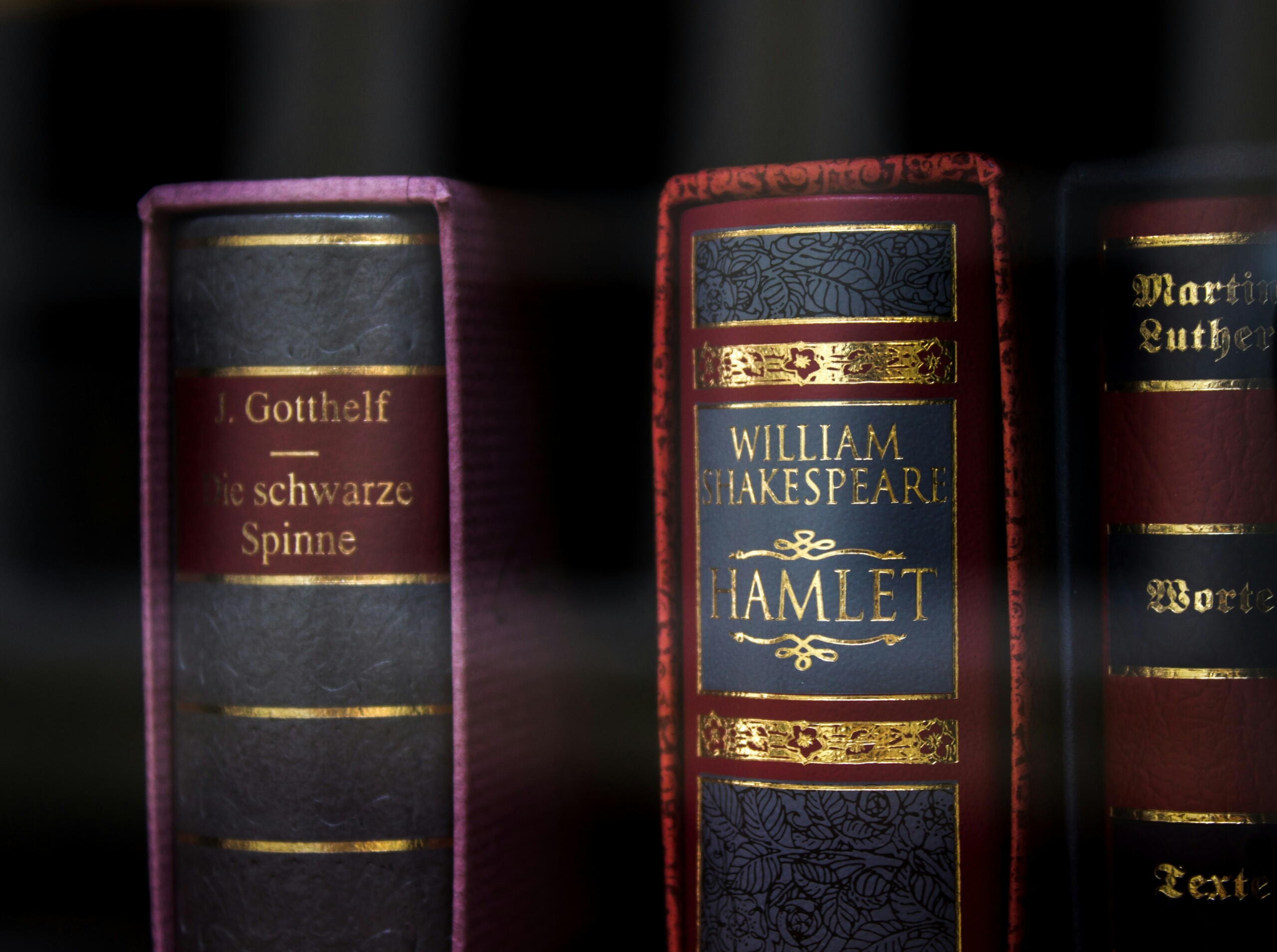

















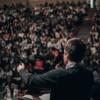

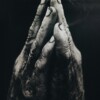

One Comment